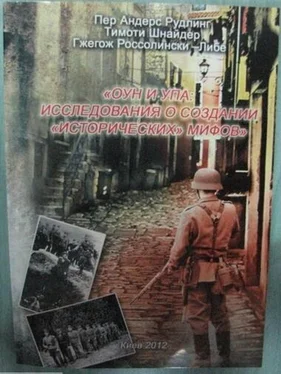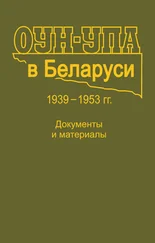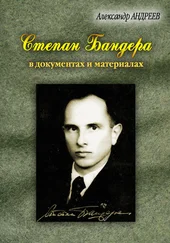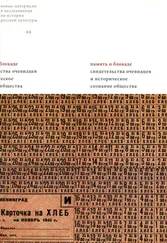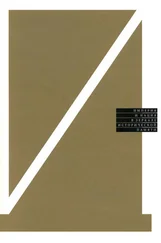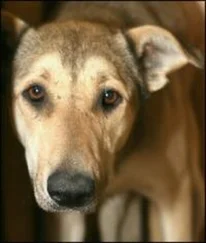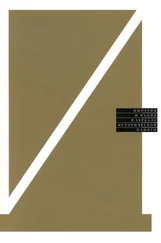Украинские националисты помнят Холокост совершенно иначе, чем выжившие евреи: «Если бы ОУН-УПА преследовали антисемитскую идеологию возможно, не выжили бы тысячи евреев», пишет Тарас Хунжак в ответ на публикацию антисемитской биографии Стецька [256] Hunczak, “Problems of Historiograhy,” 136.
. В коллективной еврейской памяти, наоборот же, украинцы часто вспоминаются как одни из самых жестоких, кто совершал Холокост [257] Morton Weinfeld, Like Everyone Else. but Different: The Paradoxical Success of Canadian Jews (Toronto: McClelland & Stewart, 2001), 213–214; Daniel Mendelsohn, Lost — A Search for Six of Six Million (London: HarperCollins, 2007), 99; Golczewski, “Shades of Grey,” 114–155.
. Выжившие евреи с Западной Украины обычно подчеркивают, что 98,5 % из волынских евреев были убиты, что в Европе есть несколько мест, где Холокост был безумно жестоким, и утверждают, что если бы не было бандеровцев, гораздо больше евреев выжило бы [258] See, for example, Himka, “The Ukrainian Insurgent Army and the Holocaust,” 15, citing the USC Shoah Foundation Institute for Visual History and Education, 20586 Jack Glotzer, 12–15; Spector, The Holocaust of Volhynian Jews, 358; Ahron Weiss, “Jewish-Ukrainian Relations in Western Ukraine During the Holocaust,” in Peter J. Potichnyj and Howard Aster, eds., Ukrainian-Jewish Relations in Historical Perspective (Edmonton: CIUS and University of Alberta, 1990), 409–420; Weiner, Making Sense of War, 270–271.
.
Бездействие и фальсификация
Существует различие между отрицанием и затемнением фашизма ОУН и этнических чисток, и прямой фальсификации истории на основе подделок. Отрицание фашизма представляет собой контекст, в котором своеобразное повествование развивается, а представление ОУН филосемитским спасителем евреев содержит несколько примеров этого отрицания. Генеалогия повествования об УПА как о спасителе евреев датируется несколькими десятилетиями назад. Один из первых источников появился от Николая Лебедя, и был опубликован в 1946 г. [259] See Mykola Lebed, UPA: Ukrains’ka Povstans’ka Armiia (n.p. 1946), 35–36; for other early claims on Jews in UPA, see Petro Mirchuk, Ukrains’ka Povstans’ka Armiia,1942–1952 (Munich: Cicero,1953),69–72.
:
«Большинство врачей в УПА были евреями, которые были спасены УПА К еврейским врачам относились как к гражданам Украины и должностным лицам в украинской армии. Нужно должным образом подчеркнуть, что в тот момент все они выполняли свои надлежащие обязанности добросовестно. Они оказывали услуги не только солдатам, но и всему населению. Они путешествовали по всей области, организовывали полевые госпитали и местные медицинские пункты. Они не бросали боевые ряды в ситуациях, даже когда имели возможность перейти к Красным. Многие из них погибли смертью храбрых» [260] Lebed’, Ukrains’ka Povstans’ka Armiia, 35–36, cited in Friedman, “Ukrainian-Jewish Relations,” 204.
.
В 1950-х и 1960-х годах, рассказ об ОУН, изображающий ее как организацию праведного спасения евреев, начал формироваться, охотно поддерживаясь эмигрантами ОУН [261] Leo Heiman, “We Fought For Ukraine — the Story of Jews Within the UPA,” Ukrainian Quarterly, vol. 20, no. 2 (Spring 1964):33–44.
. ОУН (б) приняла активное участие в мифотворчестве, в том числе в изготовлении подделок. Одной из наиболее значительных подделок является биография Стеллы Крентсбах, выдуманной еврейки, которая хвалит «Бога и Украинскую повстанческую армию» за то, что пережила Холокост. Поддельная биография появилась под редакцией Петра Мирчука [262] Dr. Stella Krentsbakh, “Zhyvu shche zavdiaky UPA,” in Petro Mirchuk and V. Davydenko, eds., V riadakh UPA: Zbirka spomyniv buv. Voiakiv Ukrains’koi Povstans’koi Armii (New York: Nakladom T-va b. Voiakiv UPA v ZDA i Kanadi, 1957), 342–349.
. История Крентсбах получила значительное внимание в эмигрантской прессе. И все же журналисты, которые пытались найти ее, скоро узнали, что такого человека не существует. Филипп Фридман, сам переживший Холокост на Западной Украине, обратил непосредственное внимание на эту историю, и вскоре смог сделать вывод, что «вся эта история является мистификацией» [263] “The questionable source mentioned here is the ‘memoir,’ allegedly by a Jewish woman named Stella Kreutzbach, in Nasha Meta, Toronto 27 and December 4, 1954; Ukrainske Slovo (Buenos Aires), October 10, 1954; Kalendar Almanakh na 1957 Rik (Calendar Almanac for 1957) (Buenos Aires): 92–97. Kalendar also features an article by Dmitry Andreyewsky (pp. 88–91), in which he states that Stella Kreutzbach went to Palestine after the war, where she was later employed as a secretary in the foreign ministry, and that several weeks after the publication of her memoirs in the Washington Post (which the Ukrainian publication credited for fi rst releasing the memoirs) she was mysteriously shot and killed. I checked the Washington Post of that period and did not fi nd the memoirs. At my request, Dr. N. M. Gelber of Jerusalem made inquiry in the foreign ministry there; the reply was that the ministry had never had an employee by that name and that such a case of homicide was entirely unknown. Moreover, a careful analysis of the text of the ‘memoirs’ has led me to the conclusion that the entire story is a hoax. Similarly, the Ukrainian writer B. Kordiuk labels the story ‘a mystifi cation’; he states that ‘none of the members of the UPA’ known to him ‘ever met or heard of her.’” Philip Friedman, Roads to Extinction: Essays on the Holocaust, ed. Ada June Friedman, introduction by Salo Wittmeyer Baron (New York: Conference on Jewish Social Studies, Jewish Publication Society of America, 1980), 203–204.
. Когда несуществующую Крентсбах не смогли найти, в эмигрантских кругах распространились рассказы и слухи о том, что она могла быть убита, казнена в Израиле за правду об отношении евреев к УПА [264] The Krentsbakh/Kreutzbach forgery was also discussed in the Ukrainian émigré press, where the writer Bohdan Kordiuk concorded with Friedman’s conclusions: “The careful historian Friedman give the story of Dr. Stella Krentsbakh, who ‘Thanks UPA for her Life,’ which has been re-printed so many times, his attention, but fi nds nothing about her. And rightly so, since none of the UPA veterans, known by the author of these lines, either heard or knew of this legendary Stella Krentsbakh. Neither have any Jews heard of her. Hardly any one of the tens of thousands of Ukrainians refugees claim to have met this Stella Krentsbakh. The biography, attributed to her in certain places, does not hold up to critical scrutiny; claims that she would have been working in the Ministry of Foreign Affairs do not correspond to the truth. And some were nonsensical claims — that she would have been killed on the streets of Jerusalem from a shot to the nape of her neck, supposedly due to her favorable memories of the UPA. That nonsense constitutes a jungle of the prejudices which so burden Ukrainian-Jewish relations. It seems to us, that as long as there is still no independent evidence, the stories of Dr. Stella Krentsbakh need to be regarded as a mystifi cation.” Bohdan Kordiuk, “Retsenzii: Pro liudei, spovnennykh samoposviaty: Their Brother’s Keepers by Philip Friedman. With a Foreword by Father John A. O’Brien. Crown Publishers, Inc. New York, 1957, pp. 224,” Suchasna Ukraina (Munich) 15 (194), July 20, (1958): 7.
. Мы вернемся к воспоминаниям о Стелле Крентсбах позже, так как она сыграет важную роль в пропаганде ОУН полвека спустя.
Читать дальше
